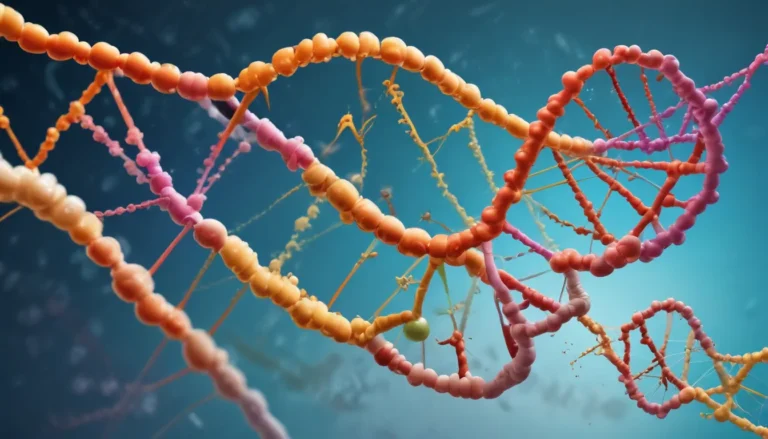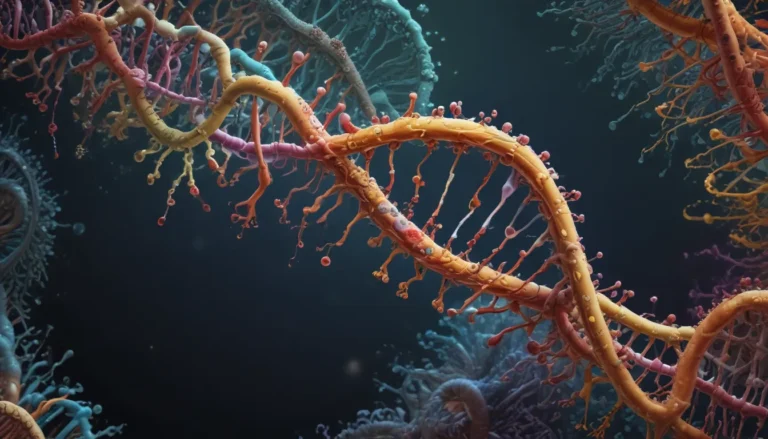A Note About Images: The images used in our articles are for illustration purposes only and may not exactly match the content. They are meant to engage readers, but the text should be relied upon for accurate information.
Interspecific interactions, the intricate relationships between different species, are vital components of ecosystem dynamics. These interactions, encompassing competition, cooperation, predation, and mutualism, shape the biodiversity and functioning of ecosystems. While some of these interactions may be well-known, there are surprising facts that reveal the complexity and uniqueness of interspecific relationships.
In this article, we will delve into nine intriguing facts about interspecific interactions that will broaden your perspective on how species coexist and interact in their natural environments. From the evolutionary implications of these interactions to their roles in maintaining ecosystem stability, these facts will illuminate the diverse ways in which organisms navigate their ecological niches.
Unveiling the Significance of Interspecific Interactions
Interactions between different species within an ecosystem, known as interspecific interactions, encompass a spectrum of relationships that can be both beneficial and detrimental. These interactions are essential for maintaining the balance and functionality of ecosystems. Mutualistic relationships, where both species benefit, and competitive interactions, where species vie for limited resources, are examples of how these interactions influence ecosystem dynamics.
Coevolution: The Dance of Species
Coevolution, the simultaneous evolution of two or more species in response to each other’s interactions, highlights the interconnectedness of interspecific relationships. Predator-prey interactions, for example, drive the adaptation of defensive mechanisms in prey species and hunting strategies in predators. This ongoing cycle of adaptation and response shapes the evolutionary trajectories of species.
Influencing Species Distribution: The Domino Effect
The presence or absence of certain species can have significant repercussions on the distribution of other species in an ecosystem. For instance, the interaction between plant species and pollinators can lead to the establishment of diverse plant communities. Conversely, the removal of key species can disrupt the ecosystem’s balance, triggering cascading effects across the food web.
Enhancing Resilience: The Power of Interconnectedness
Interspecific interactions contribute to ecosystem resilience by enabling it to withstand environmental changes and disturbances. Certain plant species, for instance, play a crucial role in facilitating the growth of other species, thereby enhancing the ecosystem’s stability and robustness.
Symbiotic Relationships: Nature’s Collaborations
Symbiotic relationships, characterized by close and long-term interactions between different species, showcase the intricacies of interspecific interactions. Mutualistic relationships, such as the partnership between bees and flowers, demonstrate how cooperation benefits both partners. Conversely, parasitic relationships, like ticks and mammals, highlight the exploitative nature of certain interactions.
Shaping Community Dynamics: The Ripple Effect
Interactions between species within a community shape its overall dynamics and structure. The introduction of a new predator, for instance, can lead to changes in prey populations, influencing the abundance and distribution of other species within the community.
Cascading Effects on Ecosystem Processes: The Butterfly Effect
Interspecific interactions have far-reaching effects on ecosystem processes. The loss of a keystone species, which exerts a significant influence on the ecosystem, can trigger the collapse of entire food webs and disrupt nutrient cycling, underscoring the interconnectedness of species within an ecosystem.
Influencing Evolutionary Trajectories: The Path of Adaptation
Interspecific interactions play a pivotal role in shaping the evolutionary trajectories of species. These interactions drive the development of unique adaptations and traits that enhance species’ survival and reproductive success in their respective ecological niches.
Upholding Biodiversity: The Tapestry of Life
The intricate web of interactions between different species is a driving force behind biodiversity. These interactions regulate population sizes, control invasive species, and foster the coexistence of diverse organisms, contributing to the health and stability of ecosystems.
Conclusion: Embracing the Complexity of Interspecific Interactions
Interspecific interactions are indispensable components of biological communities, influencing species distribution, abundance, and evolution. By unraveling the surprising facts and complexities of these interactions, we gain a deeper understanding of how organisms navigate their ecological landscapes. From the subtle nuances of competition to the profound impacts of symbiosis, each interaction plays a crucial role in shaping the intricate tapestry of life on Earth.
FAQs: Navigating the World of Interspecific Interactions
- What are interspecific interactions?
-
Interspecific interactions are relationships between different species within an ecosystem, encompassing both beneficial and detrimental interactions such as mutualism and predation.
-
How do interspecific interactions affect species distribution?
-
Interspecific interactions can influence species distribution by creating competitive or facilitative relationships that affect the survival and expansion of species in their habitats.
-
What is the importance of interspecific interactions in evolution?
-
Interspecific interactions drive coevolution, leading to the development of specialized traits and behaviors that enhance species’ survival and reproductive success within their ecological niches.
-
Can interspecific interactions have unexpected outcomes?
-
Yes, interspecific interactions can result in unexpected outcomes, such as competition leading to species exclusion or mutualistic interactions turning parasitic under certain conditions.
-
How do interspecific interactions contribute to ecosystem stability?
-
Interspecific interactions contribute to ecosystem stability by regulating populations, controlling diseases, and promoting biodiversity, essential for maintaining ecosystem functioning.
-
Are interspecific interactions only between animals?
-
No, interspecific interactions occur across different organisms, including plants, animals, and microorganisms, influencing processes like pollination and nutrient cycling.
-
Can interspecific interactions impact human activities?
-
Yes, interspecific interactions can impact human activities by influencing agricultural productivity, crop yields, and ecosystem services vital for human well-being.
-
How are interspecific interactions studied?
-
Interspecific interactions are studied through various methods like field observations, experiments, and modeling, enabling researchers to unravel the complexities and dynamics of these relationships.
-
What are the future research directions in studying interspecific interactions?
- Future research aims to explore the mechanisms underlying interspecific interactions, the role of environmental factors, and implications for conservation and ecosystem management, leveraging technological advances for deeper insights.
Interspecific interactions offer a glimpse into the intricate web of ecological relationships that shape our natural world. As we continue to explore the complexities of interspecies dynamics, we uncover the interwoven connections that sustain biodiversity and ecosystem resilience. By delving into the nuances of these interactions, we gain a profound appreciation for the delicate balance that exists between different species, highlighting the remarkable diversity and adaptability of life on Earth.






